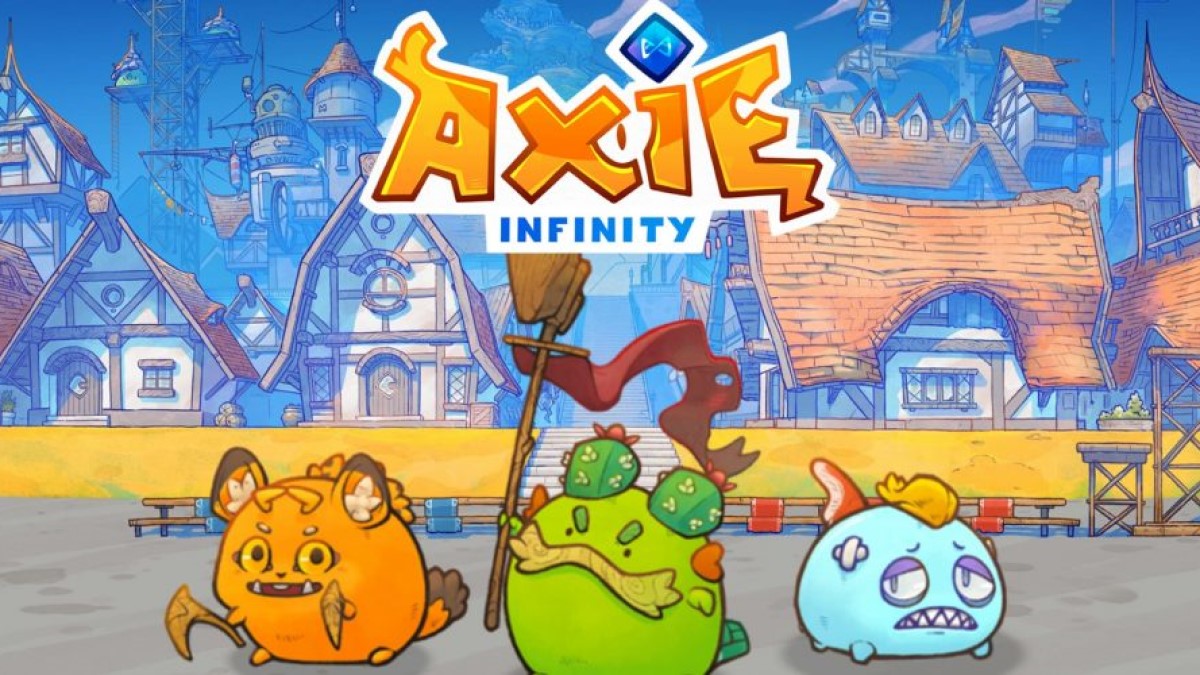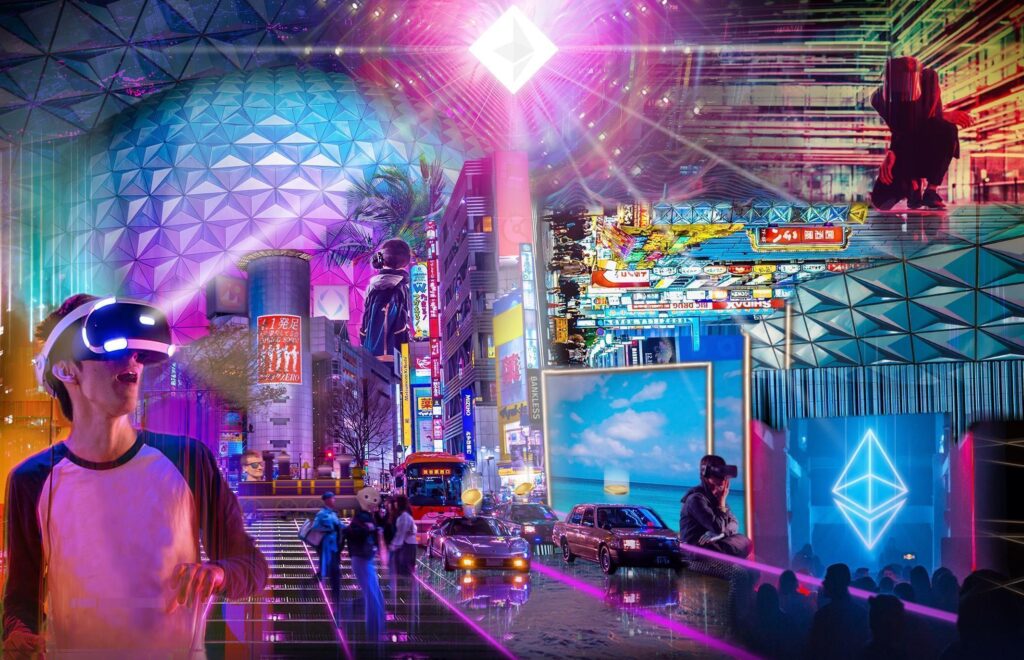
When Axie Infinity first launched, it was more than just another game in the ever-growing world of NFTs and blockchain technology—it was a groundbreaking moment for NFT gaming. It was one of the first games to introduce the Play-to-Earn (P2E) model, which allowed players to earn real-world value through their in-game efforts. This revolutionary approach to gaming helped fuel the NFT boom and introduced millions of players globally to the possibilities of decentralized gaming.
See more: How to Sell Axies in the Axie Infinity Game
But the question remains: Is Axie Infinity still worth playing in 2025? Despite its massive success, the game has faced significant challenges in recent years, including economic instability, competition from newer NFT projects, and market volatility. In this guide, we will explore Axie Infinity’s origins, its rise to fame, the current state of the game, and whether it remains a valuable experience for gamers in 2025.
The Origins of Axie Infinity
The story of Axie Infinity begins in 2018 with the founding of Sky Mavis, a blockchain game studio based in Vietnam. The company was co-founded by Trung Nguyen and Aleksander Leonard Larsen, who shared a vision of combining traditional gaming mechanics with blockchain technology. They wanted to create a game that wasn’t just fun to play but also allowed players to earn real-world rewards through their in-game participation.
Axie Infinity drew inspiration from pet-collection games like Pokémon, but the twist was that the creatures players would collect, Axies, were tokenized as Non-Fungible Tokens (NFTs). Each Axie was unique, and players could breed, raise, and battle them within the game. This provided true ownership of digital assets—an aspect that wasn’t possible with traditional gaming.
In 2020, the introduction of Play-to-Earn (P2E) mechanics took Axie Infinity to new heights. Players could now earn SLP (Smooth Love Potion) tokens by participating in battles, completing tasks, and breeding Axies. These tokens had real-world value and could be traded for cryptocurrency or fiat money, adding an entirely new dimension to the gaming experience.
Axie Infinity became a turning point in the NFT gaming world by proving that games could offer economic opportunity alongside entertainment. This revolutionary concept created an immersive, player-driven economy that blurred the lines between gaming and real-world income, especially for players in developing countries.
The Play-to-Earn (P2E) Model in Axie Infinity
The Play-to-Earn model introduced by Axie Infinity is at the core of the game’s success. In traditional games, players invest time and money into a virtual world but typically don’t get much in return beyond in-game rewards. Axie Infinity flipped this model by enabling players to earn SLP tokens and AXS tokens (Axie Infinity’s governance token) through gameplay.
Here’s how it works:
- Axie Breeding: Players can breed their Axies to create new ones, which are also NFTs. These Axies can then be sold or used for battles. Breeding requires both SLP and AXS tokens, making it an investment in the game’s economy.
- Battles: Players participate in turn-based battles where they use their Axies to fight against other players or AI. Winning battles rewards players with SLP tokens, which can be exchanged for cryptocurrency or fiat.
- Land and Items: Axie Infinity also has a virtual land system, where players can buy and sell land as NFTs. Additionally, items like accessories and skins for Axies can be traded or used for further breeding.
This economic model was revolutionary because it allowed players to earn income by engaging with the game in a way that felt natural to the gameplay. It provided access to an income stream for many people, especially those in regions with limited job opportunities. For a time, Axie Infinity became a full-time job for many players, especially in places like the Philippines, where some gamers were able to earn more playing Axie Infinity than through traditional employment.
Axie Infinity’s Global Impact
Axie Infinity’s rise wasn’t just about entertainment—it had a profound social and economic impact globally, particularly in developing countries. In places where traditional jobs were scarce or poorly compensated, Axie Infinity offered a new avenue for income.
In countries like the Philippines, the game became a primary income source for many players. The game’s model allowed individuals to become “scholars” (players who do the in-game tasks in exchange for a share of the earnings), creating a dual economy where experienced players (called “managers”) would lend their Axies to scholars. This system allowed players who couldn’t afford to buy Axies to still participate in the game and earn a share of the rewards.
For many, Axie Infinity became more than just a game—it was a lifeline. It provided an opportunity to earn a sustainable living during the COVID-19 pandemic, when many people faced unemployment or financial instability. Axie Infinity’s impact on financial empowerment, particularly in the global south, is a testament to how blockchain technology can be used for more than just speculative trading. It allowed individuals to enter the digital economy, bypassing traditional financial barriers.
However, this success also came with challenges, particularly with inflation in the game’s currency (SLP) and increasing barriers to entry as Axie prices soared. As the game’s economy relied heavily on the influx of new players, these challenges eventually led to some instability. Still, Axie Infinity left a lasting mark on the Play-to-Earn landscape, showing that games can provide real economic value for players.

Challenges and Criticisms: Sustainability and Competition
Despite its initial success, Axie Infinity has faced a series of challenges and criticisms that have led many to question whether the game is still worth playing in 2025. Let’s examine some of the key issues:
1. Economic Instability
As Axie Infinity grew in popularity, its in-game economy began to show signs of inflation. The SLP token, which players earned through gameplay, began to lose value, making it more difficult for players to profit. This was due in part to an oversupply of tokens, which led to a devaluation. For a time, players were no longer able to earn as much as they had in the past, and many began to leave the game.
2. High Entry Costs
Initially, Axie Infinity had a relatively low entry barrier. However, as the game’s popularity grew, the price of Axies (the game’s NFT creatures) surged, making it difficult for new players to afford the investment required to start. This shift in pricing has led to a situation where only players with significant financial resources can fully participate in the game, further alienating casual players and reducing the accessibility of the game.
3. Competition
While Axie Infinity was the first to introduce the Play-to-Earn model, it has faced increased competition from other NFT games that offer similar mechanics. Games like The Sandbox, Decentraland, and Gods Unchained have entered the market, offering new opportunities for players to earn and trade NFTs. These games have attracted attention by providing different gaming experiences and economic structures, making it harder for Axie Infinity to maintain its position as the dominant force in the Play-to-Earn space.
4. Sustainability of the P2E Model
The underlying challenge for Axie Infinity—and all Play-to-Earn games—is the sustainability of the P2E model. These games rely on constant new player influx to maintain economic stability. Without fresh players entering the ecosystem, the rewards system becomes unsustainable, as it ultimately depends on players selling assets to new buyers rather than generating value through gameplay itself.
The Future of Play-to-Earn Gaming and Axie Infinity’s Role
Despite the challenges, the Play-to-Earn model is far from dead. As Axie Infinity adapts and evolves, it is shaping the future of Play-to-Earn gaming. In 2025, it’s clear that the future of NFT gaming will be marked by increased sustainability and a shift toward long-term engagement rather than speculative trading.
Axie Infinity has already begun exploring ways to address its economic issues. The development team at Sky Mavis is working on updates to the game’s economy, including the introduction of staking mechanisms and improved tokenomics, which aim to balance the supply and demand of in-game rewards. They are also focusing on gameplay improvements, offering new features and experiences to keep players engaged long-term.
While Axie Infinity faces increased competition, its early success and strong community make it a likely contender to shape the future of the Play-to-Earn space. If it can maintain a stable economic ecosystem and offer players an engaging experience, Axie Infinity could continue to thrive alongside new entrants to the market.
Conclusion: Is Axie Infinity Still Worth Playing in 2025?
So, is Axie Infinity still worth playing in 2025? The answer depends on your perspective. For casual players who are interested in earning money while enjoying a game, Axie Infinity may still offer value, but only if the game addresses its economic challenges and provides more accessible entry points. For veteran players who have already invested time and money, it could still be a worthwhile endeavor, provided they can navigate the current market dynamics.
Axie Infinity has been a trailblazer in the NFT gaming world, and while it faces challenges, it remains a key player in the evolution of Play-to-Earn games. The future of Axie Infinity—and the broader P2E movement—will depend on its ability to adapt, offer long-term value, and evolve alongside new technologies and competition.
If Axie Infinity can weather the storm and continue to innovate, it may still have a significant role to play in shaping the future of NFT gaming in 2025 and beyond.